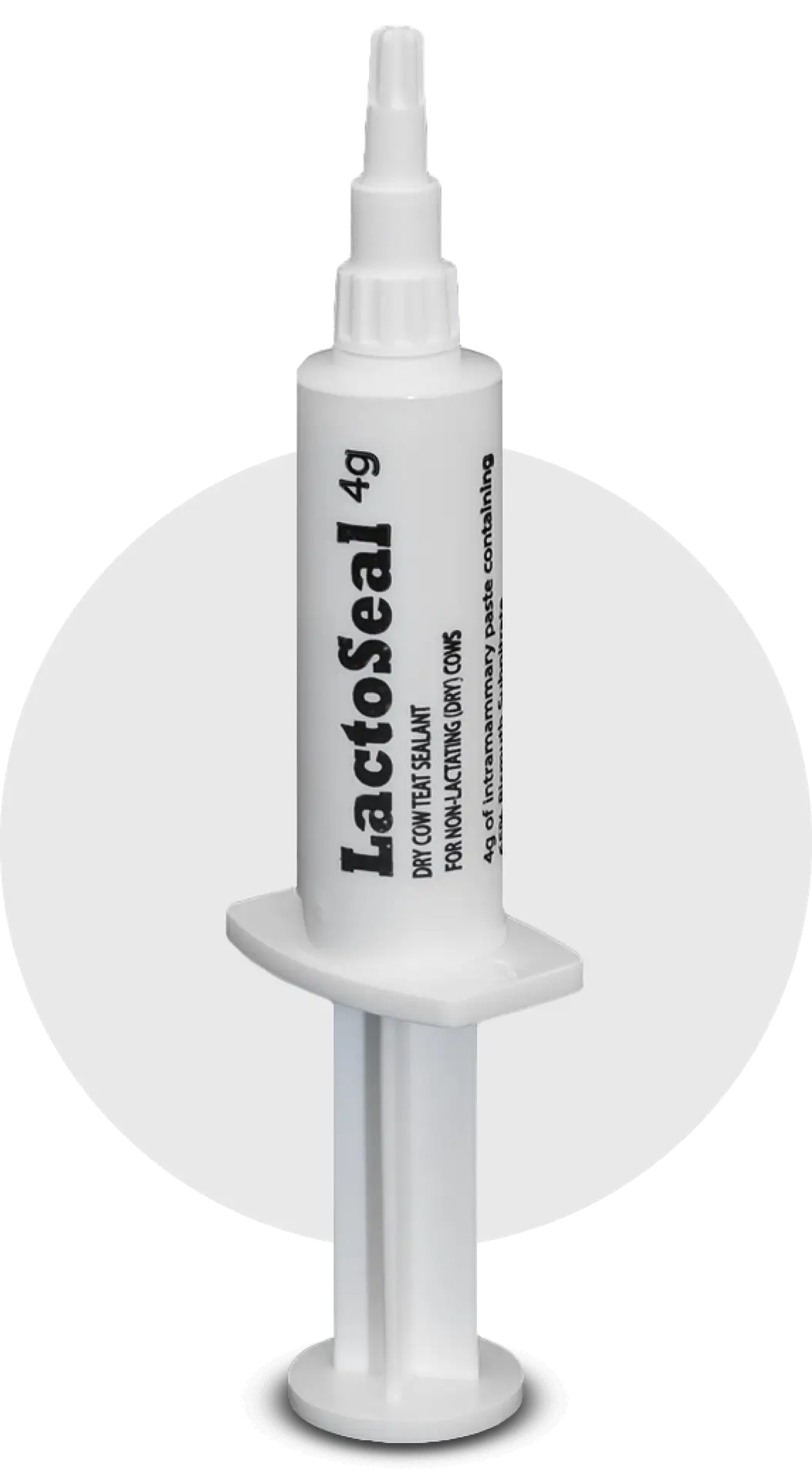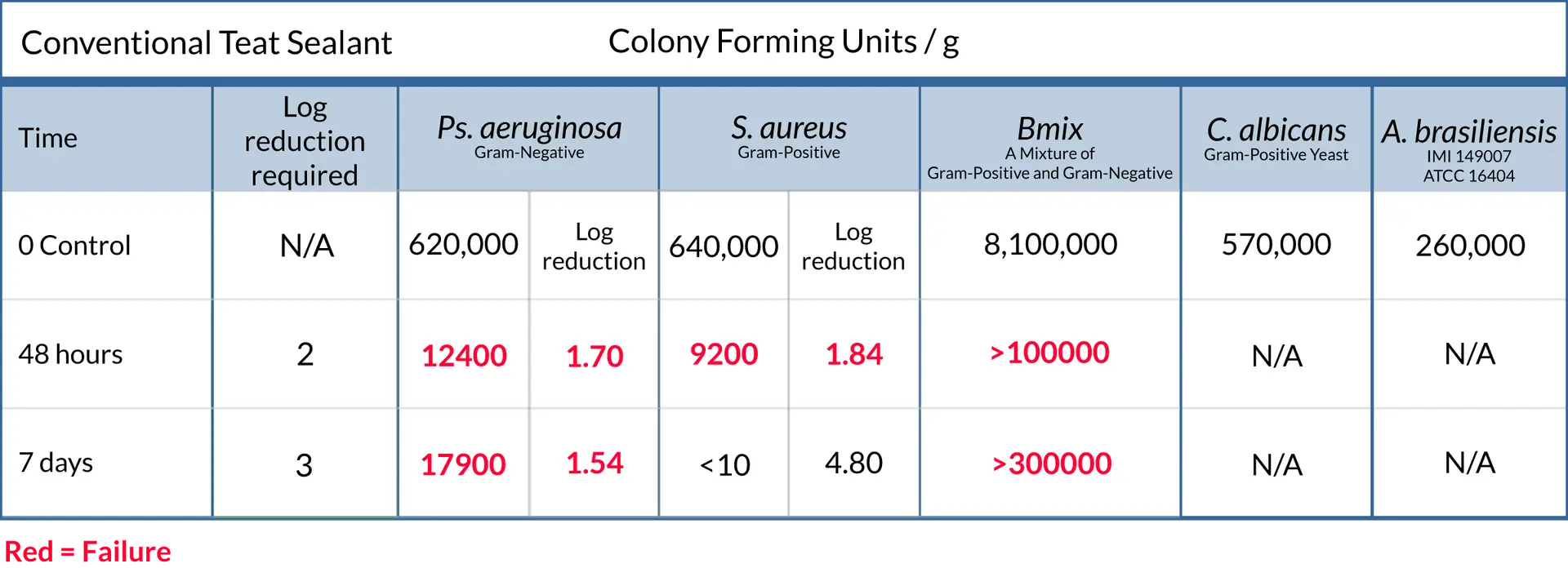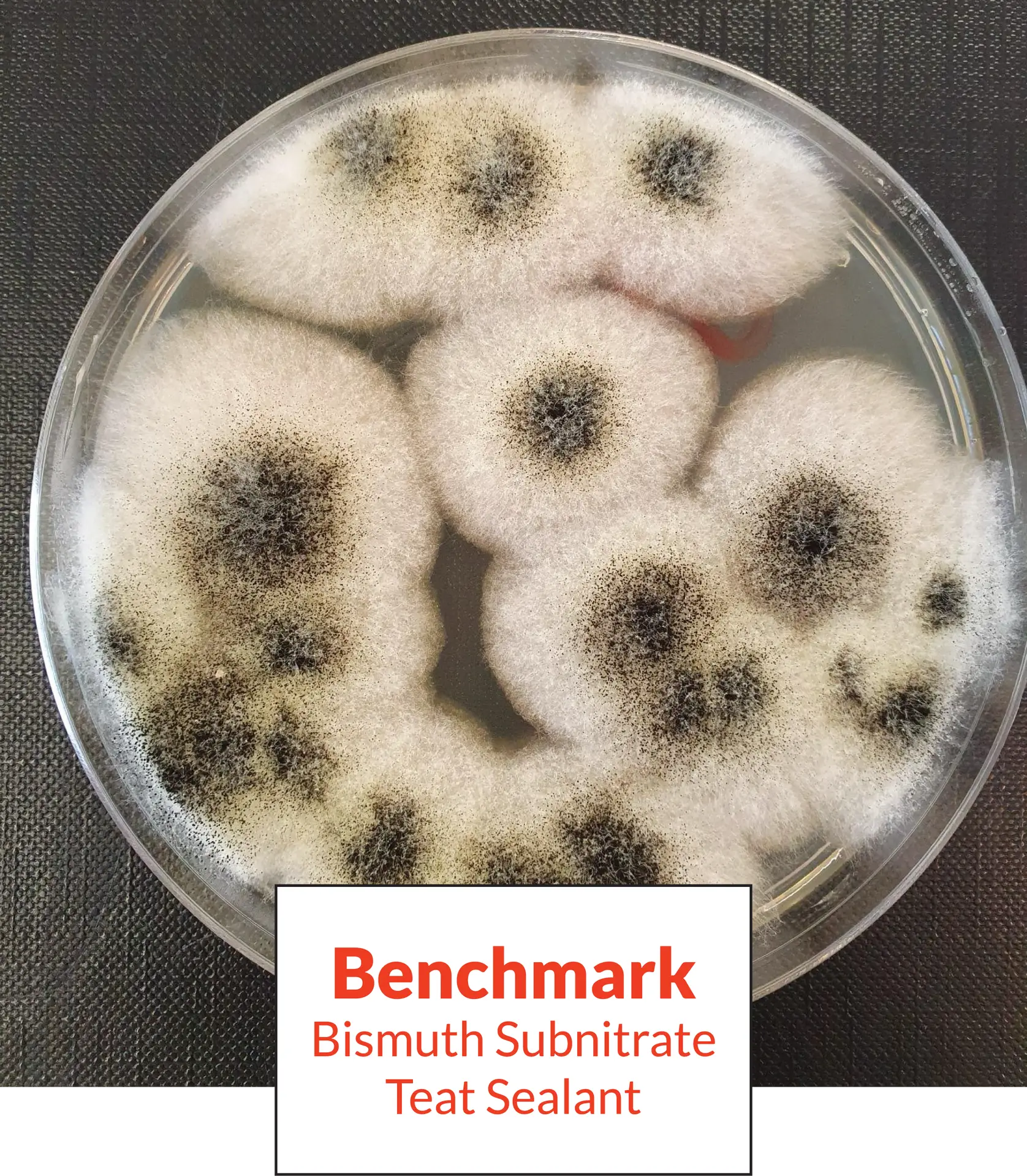
Industry Standard Bismuth Subnitrate Technology
ANTIMICROBIAL ACTION
No Change in Protocol
What is LactoSeal®
LactoSeal is formulated just like other bismuth subnitrate teat sealants but, additionally, contains Phenoxyethanol, a powerful, GRAS listed, antimicrobial. This secondary antimicrobial action of LactoSeal provides the sealant with broad range protection against gram-negative and gram-positive bacteria and many other opportunistic microorganisms. LactoSeal’s unique antimicrobial properties offer a significant advantage over conventional products, providing secondary protection against new cases of mastitis during the dry period—without requiring any changes to existing protocols.
Industry Standard Bismuth Subnitrate
Bismuth Subnitrate Technology has been demonstrated to reduce the incidence of new cases of mastitis in the dry period by sealing the cow’s teat, mimicking the cow’s natural defense until involution is complete.
Antimicrobial Protection
Formulated with a broad spectrum, GRAS preservative, stabilizing the implant, making the sealant more tolerant in use and hostile to opportunistic bacteria. Enhanced, secondary protection from the entry of viable bacteria found everywhere on the farm.
No Change in Protocol
Use LactoSeal like your existing teat sealant. For use with both Conventional and Selective Dry Cow Therapy.
Easy to Squeeze / Almost Air-Free
LactoSeal syringes contain virtually no air, resulting in a more compact format with easier to control, smoother delivery. The splutter-free design results in an uninterrupted plug of sealant with less tendency for it to be propelled too far. Also, pre-wetted, wider cannula for easy, lubricated insertion requiring less application pressure with less risk of trauma.
Conventional Teat Sealants: The Problem
Conventional Teat Sealants:
The Problem
Bacterial Exploitation of Conventional Teat Sealants
Conventional Bismuth Subnitrate Teat Sealants (Conventional Teat Sealants) have been the dairy industry’s tool of choice for 20 years in reducing the incidence of mastitis in the dry period. The problem, however, is that Conventional Teat Sealants are intrinsically flawed. Conventional teat sealants have been carefully formulated to be “inert” and exhibit little, or no, demonstrable antimicrobial activity. Due to their inert, yet sticky nature, these Conventional Teat Sealants have the potential to acquire microbes from the environment, during or post infusion. These pathogens are able to exploit the sealant.
"Growth of organisms is sustained within the product"
Disturbingly, under certain circumstances microbial growth can be sustained within conventional sealants, i.e. bacteria can use the sealant paste as a medium for growth. When testing such a product, a UKAS accredited, microbiological laboratory reported, “The data shows that growth of the organisms is sustained within the product, and the preservative system has negligible effect on the organisms introduced.” Conventional Teat Sealants fail one of the most basic adequacy of preservation tests (“The Test for the Efficacy of Antimicrobial Preservatives – EP 10th Edition”).

LactoSeal®: The Solution
LactoSeal Inhibits Bacteria On and Within The Sealant
LactoSeal is just like a Conventional Bismuth Subnitrate Teat Sealant but, in addition, is further impregnated with Phenoxyethanol, a powerful, GRAS (Generally Regarded As Safe) listed, antimicrobial. LactoSeal’s secondary antimicrobial protection inhibits gram-negative and gram-positive bacteria within, or on, the sealant, making it more difficult for bacteria to exploit the sealant.
Impregnated with Phenoxyethanol
“Phenoxyethanol has a broad range of antimicrobial activity, but the greatest activity is against gram-negative organisms. It is particularly effective against Pseudomonas aeruginosa” (J. American College of Toxicology 1990). LactoSeal’s secondary antimicrobial protection inhibits gram-negative and gram-positive bacteria within, or on, the sealant, making it much more difficult for bacteria to exploit the sealant.
No Change in Protocol
Use LactoSeal as you would a conventional teat sealant, with no change of protocol. Safe for use in non-lactating dairy cows. LactoSeal requires no milk or pre-slaughter withdrawal. If antibiotics are used, follow recommended withdrawal times. LactoSeal is a physical teat sealant, it simulates the keratin plug, the cow’s natural defense, to seal the teat against bacteria. LactoSeal paste is a malleable, antimicrobial barrier. It is recommended that LactoSeal be used as part of a herd approach to mastitis control. LactoSeal is compatible with conventional dry-cow management practices.




